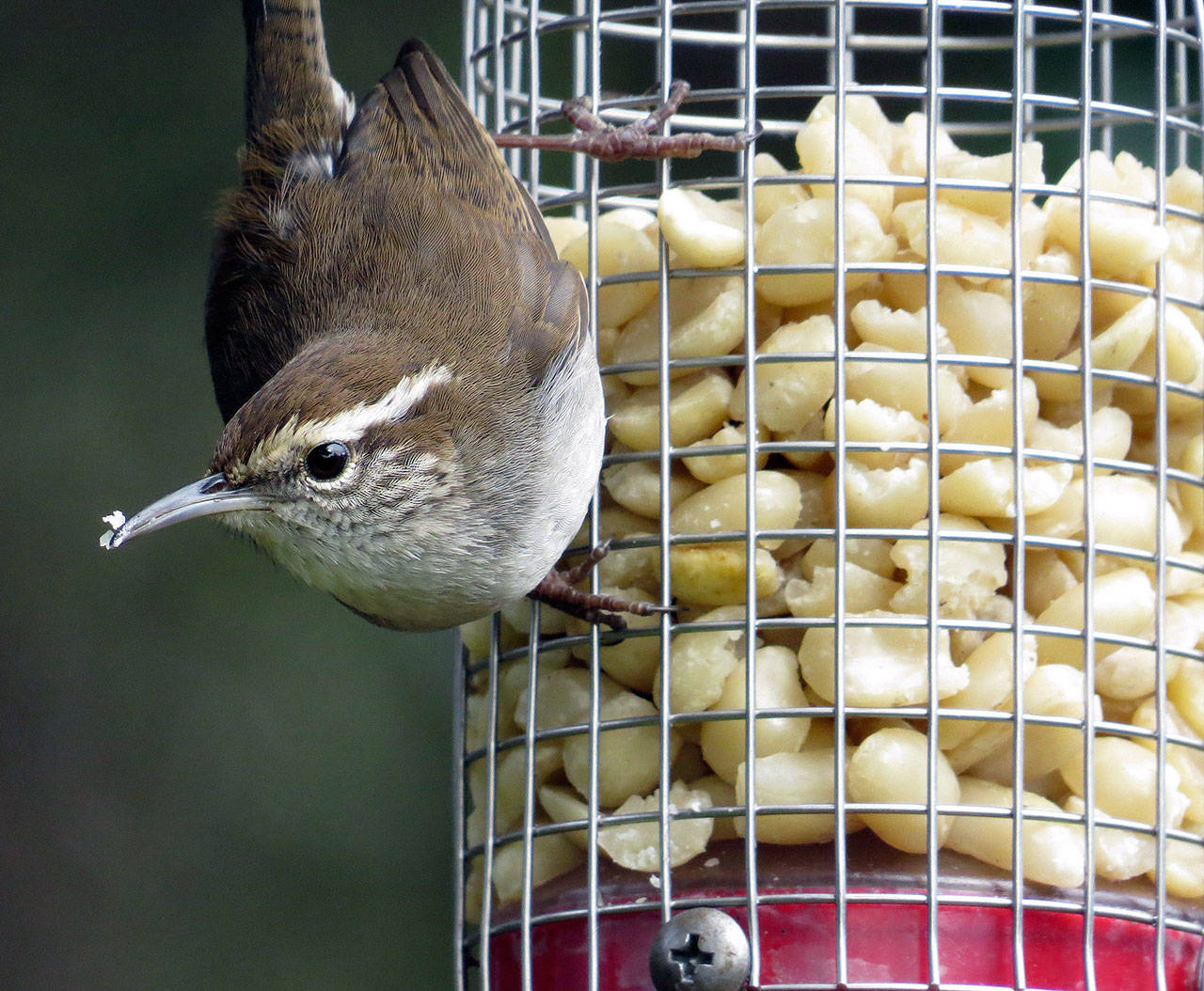Did you catch the recent story in the South Whidbey Record about the Cooper’s hawk that flew in the door of The Goose market in Bayview and spent the day there? The interesting part for me was how easily Steve Layman captured the raptor, which he later released safely back into the wild.
Steve has been training hawks in the open fields on our property near Langley since before we purchased it in 1996. I’m always impressed with his knowledge of raptors and willingness to share this with others. And his skill helping out birds in trouble.
That story reminded me of the many “friends” that help and support the birds of South Whidbey, and I’d like to pay tribute to a few, in addition to Steve.
Another South Whidbey friend of birds is Freeland veterinarian Dave Parent. The closest wild bird rescue facility is located off island, but Dave is often available to examine injured birds and suggest further steps to help them.
Also, Linda Bainbridge comes to mind. An avid birder and cat “parent,” she has educated herself on the detrimental impact that outdoor and feral cats have on wild birds. Recent estimates are that over three billion birds die each year in the United States from encounters with cats. Linda has helped me and many others understand that bells and bibs don’t resolve the problem and that keeping cats indoors is the best solution for the health of the cats as well as the birds.
Of course, the Whidbey Audubon Society spawns countless bird friends with their field trips, programs and educational opportunities for both adults and young people. Hats off to them and their continued efforts to help birds in many, many ways.
But let’s also acknowledge the Whidbey Camano Land Trust for helping preserve natural habitat for wild birds. They’ve saved some of our most mature forests for the woodpeckers, wrens, chickadees, nuthatches, thrushes and the many other species that thrive in deep forests.
Kudos to Craig and Joy Johnson and their spectacular books, photographs and videos of birds. They readily share these materials with many people and non-profit groups. Craig regularly contributes photos to accompany my monthly columns for this paper.
Dan Pedersen writes a weekly blog about life on South Whidbey, often partnering with Craig and Joy. Dan frequently reminds us of the blessings and joys of living close to and noticing nature.
A special shout out to the folks at the county who are working on salmon recovery, shoreline management and other regulations to protect our riparian areas, wetlands, bluffs and beaches. Marine birds especially benefit from these efforts. And add to the list the Sound Water Stewards educating citizens about how to care for our precious island environment.
A couple of other friends that might not come immediately to mind are the Migratory Bird Act and the Endangered Species Act. Legally protecting birds and focusing on the bird species in greatest need, these two pieces of legislation have created countless opportunities for saving and protecting wild birds and their habitats.
Most importantly, there’s you! All you bird lovers who maintain bird-friendly environments around your homes and in your neighborhood parks. Those of you who feed birds responsibly, avoid using pesticides, plant native trees and shrubs, keep your cats indoors, smother your windows with decals to avoid window strikes and talk to your neighbors about creating healthy environments—all of you—are the strongest voices for birds.
Although they sing beautifully, birds can’t speak for themselves. It takes all of us watching out for and protecting our wild birds to keep them safe and healthy.



